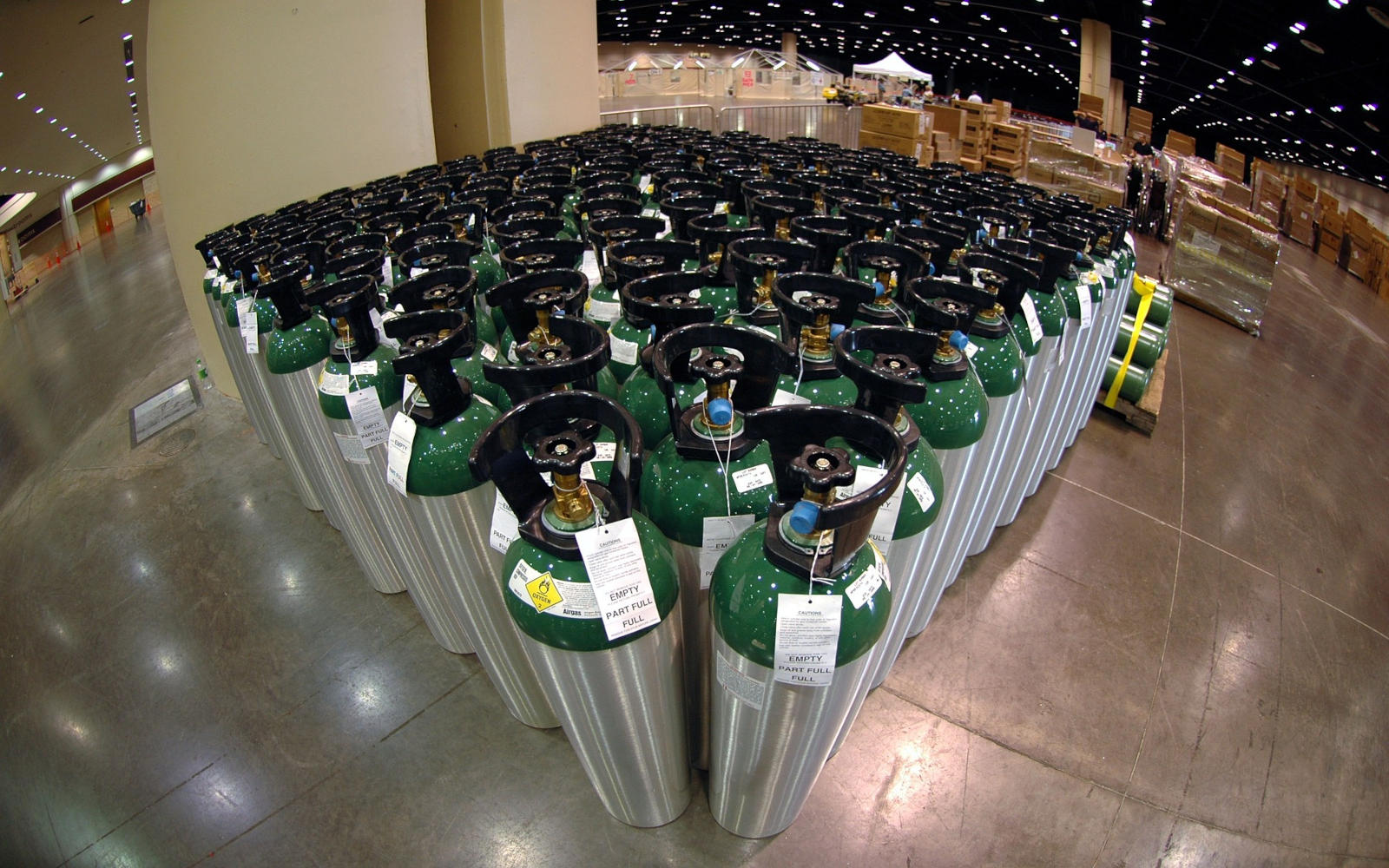In industrial settings, the use of oxygen and acetylene gases is commonplace, particularly in welding, cutting, soldering, and brazing. These gases, when combined, create a highly intense flame capable of reaching extremely high temperatures, making them invaluable for various industrial processes.
However, their potent characteristics also come with significant risks, particularly concerning storage and handling. Proper procedures are essential to ensure workplace safety and prevent accidents, such as fires or explosions.
This article will delve into the critical aspects of managing oxygen and acetylene cylinders, offering insights and actionable advice for safety managers, industrial hygienists, and other stakeholders.
Understanding the Risks
Oxygen itself is not flammable, but it significantly accelerates the combustion process. When oxygen is present in an environment, it can lower the ignition temperature and increase the burning rate of flammable materials. This makes oxygen a potential hazard if not properly controlled, especially when a leak occurs. An oxygen-enriched environment, defined as having more than 21% oxygen in the air, can drastically increase the risk of fires.
Acetylene is an exceptionally volatile gas used in welding, brazing, and other applications. It is stored in cylinders containing a mixture of acetylene dissolved in a solvent, typically acetone, along with a porous mass to prevent dangerous decomposition.
If not adequately managed, acetylene can decompose violently, causing a rapid release of gas that may lead to ignition or explosion. Common triggers for acetylene decomposition include exposure to heat, contact with incompatible materials, or physical damage to the cylinder.
Key Safety Considerations
1. Proper Storage:
-
- Separation Distance: Oxygen and acetylene cylinders must be stored at least 10 feet apart to minimize the risk of cross-contamination and fire. When space is limited, a barrier or screen wall may be used, provided it complies with state and local regulations.
- Ventilation: Storage areas should be well-ventilated to prevent the accumulation of gases. In confined spaces, even small leaks can lead to dangerous concentrations of oxygen or acetylene.
- Secure Placement: Cylinders should be stored upright and securely fastened to prevent them from tipping over, which could damage valves and cause leaks.
2. Handling Procedures:
-
- Leak Detection: Portable and fixed gas detectors are essential for monitoring for leaks, especially in storage and use areas. It is crucial to regularly calibrate and maintain these detectors to ensure accurate readings.
- Regular Inspections: Cylinders, hoses, valves, and connections should be inspected regularly for signs of wear, damage, or corrosion. Frayed hoses and loose connections are common sources of leaks.
- Safe Transport: When moving cylinders, use appropriate carts or trolleys. Never roll cylinders on the ground, as this can cause physical damage.
3. Operational Best Practices:
-
- Separation from Combustible Materials: Oxygen and acetylene cylinders should be kept away from oils, grease, and other combustible materials. Oxygen can cause these substances to ignite spontaneously, leading to fires.
- Temperature Control: Cylinders should be stored in a cool, dry place, away from direct sunlight and sources of heat. High temperatures can increase the pressure inside the cylinders, potentially leading to ruptures or leaks.
- Handling of Valves: Always open cylinder valves slowly to control the flow of gas and prevent rapid pressurization of regulators and hoses, which can lead to equipment failure.
Lesser-Known Insights
- Material Compatibility: Certain metals, such as copper, should be avoided in acetylene systems, as they can catalyze the decomposition of acetylene, increasing the risk of explosion. Only use materials specifically rated for acetylene use.
- Emergency Preparedness: In addition to having fire extinguishers readily available, training staff in emergency response procedures is crucial. This includes knowing how to shut off gas supplies and evacuate the area safely.
Conclusion
Proper storage and handling of oxygen and acetylene cylinders are paramount for maintaining safety in industrial environments. By following the best practices outlined above, safety managers and other professionals can mitigate the risks associated with these gases.
Regular inspections, appropriate storage solutions, and the use of reliable gas detection systems, like Interscan’s Accusafe or GasD 8000, can significantly enhance safety protocols. To request a quote or learn more about our systems, contact us today.


